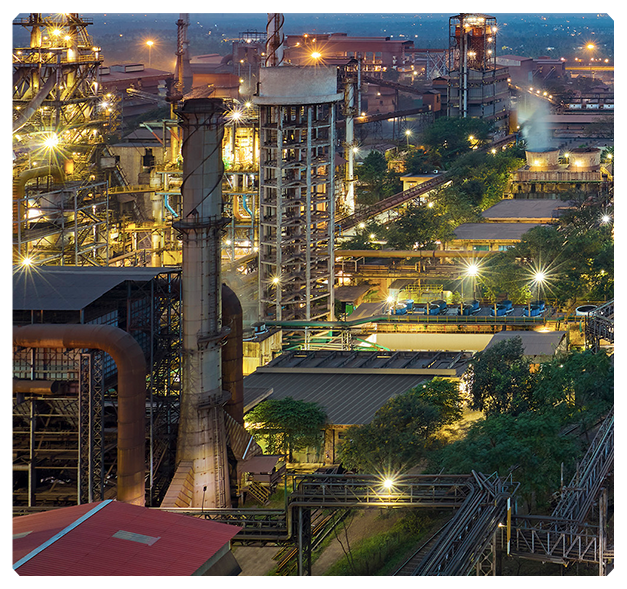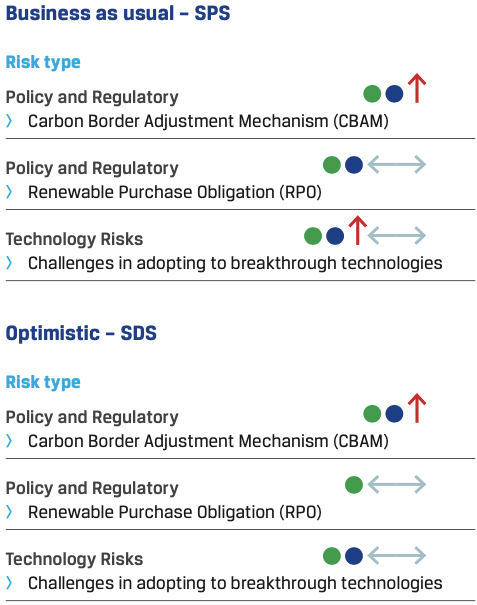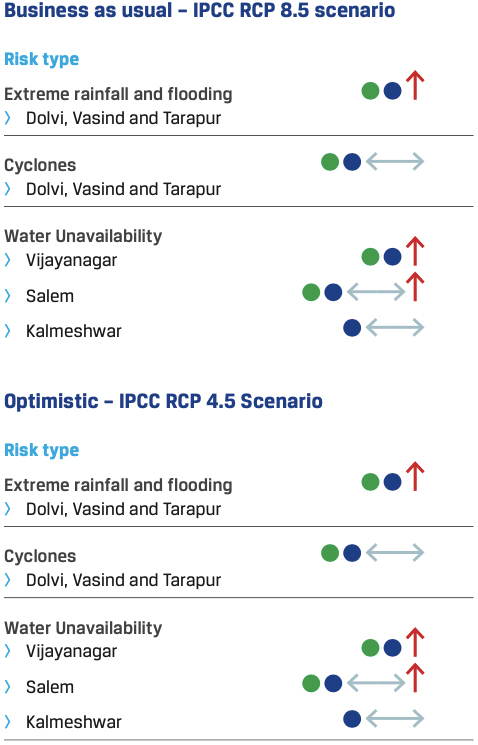As one of the major steel producing companies in India, we are committed towards addressing climate change concerns and are taking measurable actions to ensure a low-carbon future. We have developed a roadmap for this purpose. Furthermore, we have adopted the Taskforce on Climate-related Financial Disclosures (TCFD) framework and became signatory to the Taskforce in March 2021.
Having showcased a glimpse of our first TCFD response in FY 2020-21, we continued to lay the foundation required for integrating climate change concerns into our overall governance structure and business decision making process. We carried out a scenario-based climate change risk assessment exercise to determine potential implications of climate risks on our steel business and operations and to strengthen future financial planning.
We have utilised internationally accepted scenarios from two primary sources:
We used the IPCC Representative Concentration Pathways RCP8.5 and RCP4.5 for assessing location-specific physical risks and IEA World Energy Outlook (WEO) 2020 Stated Policies Scenarios (STEPS) and Sustainable Development Scenario (SDS) for assessing transition risks.

Physical and transition climate change scenarios
Business-as-usual Scenario
IPCC scenarios (Physical Risks)
RCP8.5 Scenario
Extremely high emissions scenario with global mean temperature expected to rise by 3.7oC (2.6-4.9oC) by end of the century. The scenario assumes high dependence on fossil fuels and no policy-driven mitigation.
WEO-2020 scenarios (Transition Risks)
Stated Policies scenario
Incorporates existing and announced climate policies (till mid-2020) including Nationally Determined Contributions from governments across the world. The scenario provides a baseline against which additional actions are required to meet SDS climate goals.
Optimistic scenario
IPCC scenarios (Physical Risks)
RCP4.5 scenario
Intermediate emissions scenario with global mean temperature expected to rise by 1.8oC (1.1-2.6o C) by end of the century. The scenario considers increased use of renewable energy and strong policy driven mitigation.
WEO-2020 scenarios (Transition Risks)
Sustainable Development scenario
Provides an energy sector pathway which is consistent with meeting global net-zero CO2 emissions from the energy system as a whole by around 2070, universal access to energy and reduced air pollution
These climate scenarios are viewed as tools that help us make informed business decisions while taking into consideration potential impact of climate risks. We mapped each scenario for the projected time period of 2021-2050, and categorised into three horizons:
For identification and assessment of climate-related physical risks, location-specific climate profiles were developed for each asset to determine climate change impacts in every region of our operations. These risks were assessed based on two parameters:
Based on probability of occurrence and expected impact levels, risks are plotted on 3X3 risk matrix to determine risk levels i.e., high, medium and low category risks.
All the risks shown here for are the risks of high probability of occurrence with an expected impact of medium or high in the short to medium term until 2035.
The results of the scenario analysis highlights that irrespective of scenarios, climate-related risks are material for our operations and have the potential to adversely impact our business. Taking cognisance of this, we have developed a 2030 low carbon and sustainable development roadmap that addresses the significant part of transition risks.
Based on the outcomes of climate risk assessment exercise, we intend to enhance our alignment with the TCFD recommendations by implementing Utilizing outputs of scenario analysis exercise, JSW Steel shall work towards developing risk management strategies and business continuity plans for addressing material physical and transition risks and opportunities. Additionally, we shall also focus on designing key metrics/KPIs for monitoring performance of risk mitigation strategies with an aim of assessing their ability in building climate resilience over time.
Climate related transition risks

Climate related physical risks

